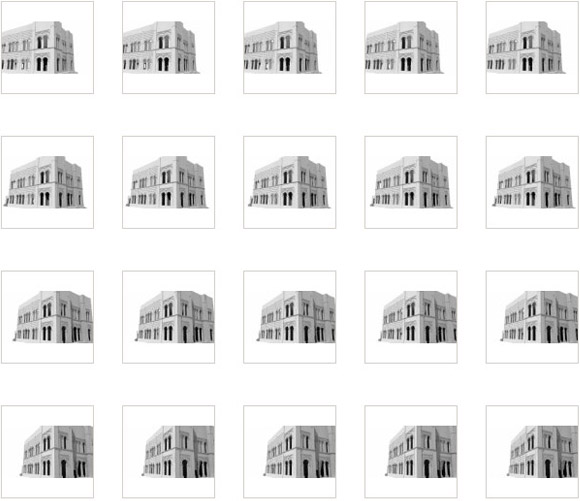
the prologue or “evil causes evil“
..We left the camp Sachsenhausen at 2 pm and headed to the East. In fact, we did not know what direction was right. We marched on the asphalt road full of soldiers and tanks, lorries and yoked horses. Thus we passed smaller and larger villages. Ajar doors scraping in the wind marked empty dwellings. Their residents escaped because of the fear of Russians. Walking and trotting we did about 30 kms in half day. Dressed in prisoners' uniforms with clogs we marched on “the way of life”. By the evening we got to the small town Bernau, which had surrendered to the Russian soldiers. The white flags were drifting all over.
In front of the church in the middle of the town we saw a Russian red-haired officer with beard. He called at me and asked in Yiddish: "Why are you going shod in that clogs? Why don't you have solid shoes?" He screw his head astonished. In a while we got to the house of German couple. "Give him your shoes!" he ordered in flat voice the landlord to take of shoes and looked down. "But these are my last shoes." The German was reluctant. Drama which came after this answer could not be described. Everything happened very quickly. I rushed out of the house. The officer was shouting after me: "Take! Take these shoes!..." But I replied: “Leave me alone”. After some time, the officer confessed, that he was the son of the main rabbi from Kiev. German soldiers had killed all his family with bayonets, therefore he did not use any another arm but bayonet... After these words I stood in the middle of the street, blowing..
the plot or „what you learn as young, as if you found in the war “
The restriction on the Jews not to settle down in mining towns was valid until 1849 and Spišská Nová Ves being one of them. Preserved registries prove that the first Jewish families came to Spišská Nová Ves in the 1950s. The first written record about Jewis' wedding is from 1866. The Jewish religious community in Spišská Nová Ves arose in 1972. The first Jewish private school was opened in the same year. The architect Michal Krucsko designed a majestic synagogue in Moorish style in 1899. The rabbi Áron Krausz (died in 1929) and the Jewish religious community endeavoured the building of the synagogue situated on the School Street opposite the present grammar school.
The synagogue was burned in 1939 twice. The first time, the German youth burned the synagogue on 23th of June at 9 pm, but a fire brigade put the fire out. Same situation repeated on next day at 6 pm. Again, a bunch of youth from Germany – the members of Hitlerjugend - came to the town on the 1st of May1941. They were on outing in Novoveská Huta close to Spišská Nová Ves. They chose the synagogue as their target. They ripped off the big gold-plated Solomon's seal from the frontage as well as the two boards of the Decalogue. They destroyed interior and at the end burned the synagogue.
The synagogue was taken to pieces for building material at the end of 1960s. The municipal summer cinema was built at its place, at present it is out of work. The roll of Jewish law ( torah - a parchment scroll with the entire body of Jewish religious literature, law, and teaching ) from Spišská Nová Ves is nowadays in Ark Pinner Liberal Synagogue in Nortwood on the London suburbs due to the effort of the families of Arpád Rauchwerger and Otto Kohn.
the gradation or “the vault of heaven”
The size of synagogue was 18x30m. The frontage was created by two towers and tympanum with Solomon's seal in the middle and symmetrically disposed windows. The first step in front of the entrance was about 10 meters to the street. The dimension of the vestibule was 7,5 x 5 meters. Three massive gates opened to the vestibule, each 1.8x3m. Two side gates led to spiral steps with approximately 30 stone steps. The wall surface was split by double pillars.
Three doors led to the main hall with Venetian checkerboard floor in yellow and terracotta. Above the central part of the hall, which covered 8 x 18.5 meters, was the imitation of vault of heaven with gold-plated stars on double cast-iron pillars. A part of ceiling was blue decorated by gold-plated stars. The inner dimension of the synagogue widened by three meters to each side . Women seats were on the galleries on both sides of the hall. The line of pillars supported girders and wooden balcony with benches. The wooden Tabernacle (Aron ha kodeš) preserving Torahs was placed in abse on the eastern side of the building under the round window and brick semidome. The Interior of synagogue was symmetrical and proportioned. Roof was covered with metal plates and shindles.
the final or „Regogue“
special thanks to
PhDr. Ružena Kormošová for writen and visual material on the synagogue, cover words and photographs from the book published in Spišská Nová Ves in (the year) 2007 „The value of life – from the memories of Walter Morgensser“ born in Spišská Nová Ves (german Zipser Neudorf) who was transported from the overcrowded Auschwitz Death Camp to the Ravensbruck Concentration Camp where he turned fourteen (went through his the fourteenth birthday), went on „the way of life“ from Sachsenhausen Death Camp,
Slavo Venglarčik for his patience with the visualization of the non-existent synagogue in Spišská Nová Ves,
R. Gonda for his help with the export of Regogue,
The company BSP Magnetica for their space and time,
Anita Gritch (Es) and Maya Harmaňošová (En) for proofreading,
Spaceman M. Oravec for webhosting,
my family and friends.



